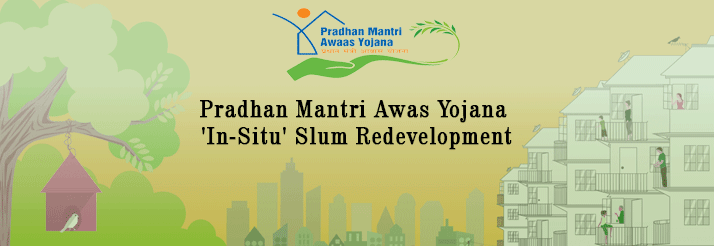What Is Pradhan Mantri Awas Yojana?
Prime Minister Narendra Modi introduced Pradhan Mantri Awas Yojana (PMAY) on 1st June 2015. The scheme will help the urban poor population of India to get their own secured and well built house. With a tag line of ‘Housing For All’ the scheme started pledges to give affordable housing to India’s urban poor population by the year 2022. This scheme focuses on slum rehabilitation, construction of better houses, renovating houses with basic needs like toilets etc.
India was once a wealthy nation but due to foreign invaders and colonization it lost its stature. People are migrating every year from rural areas to urban areas and from one urban sector to other looking for work, food and opportunities. As per the census figure of 2011, 5.41% of Indian population is living in urban slums. They face various difficulties living in slums including hygiene, water, sanitary health, education, food and crime. To offer this population with better living atmosphere, the government of India has introduced ‘In-Situ Slum Redevelopment’ program under Pradhan Mantri Awas Yojana.
What Is ‘In-Situ Slum’ Redevelopment?
‘In-situ’ means in original place. The ‘In-Situ Slum Redevelopment’ is a crucial part of Indian government’s Pradhan Mantri Awas Yojana. To provide easy and better housing facilities to slum dwellers in India’s urban sector, this scheme was launched. The slums will be redeveloped by using land as a resource with the help of private participation to build new houses. This way the land on which slums are built will be used to give sanitary, accessible and better constructed houses to people. Slum situated on government or private lands can be taken under this scheme. The private partner for this scheme will be selected by states by the open bidding process.
The beneficiary contribution in this scheme is decided by state or UT government instead of central government. Also the main eligibility of cut-off will also be decided by state or UT governments. The scheme will commence after consultation with slum dwellers’ association from the respective places.
Features And Benefits Of ‘In-Situ Slum’ Redevelopment:
To make this scheme viable state/UT government and concerned cities can provide additional Floor Area Ratio (FAR)/Floor Space Index (FSI)/Transferable Development Rights (TDR).
State and UT governments can give slum rehabilitation grant of Rs. 1 lakh* per house on average. This sum will be eligible for all those who will be benefitting from this scheme. This is an average amount and the state or UT government will have the final say on that.
The state and UT governments will decide whether the constructed houses will be given as ownership rights or on renewable, mortgage able and inheritable leasehold rights.
The house projects made under this scheme will have two components: slum rehabilitation component and free sale component. In slum rehabilitation component slum dwellers will get a house with basic civic infrastructure. In free sale component slum developers will be able to sell the house in open market.
State/UT government and cities are supposed to offer additional Floor Area Ratio (FAR)/Floor Space Index (FSI)/Transferable Development Rights (TDR) for slums on private land. Here they won’t get any assistance from central government.
The private project developers will provide transit or small-term accommodation the beneficiary slum dwellers while the construction is going on.
The open bidding process for the private partner for this scheme.









